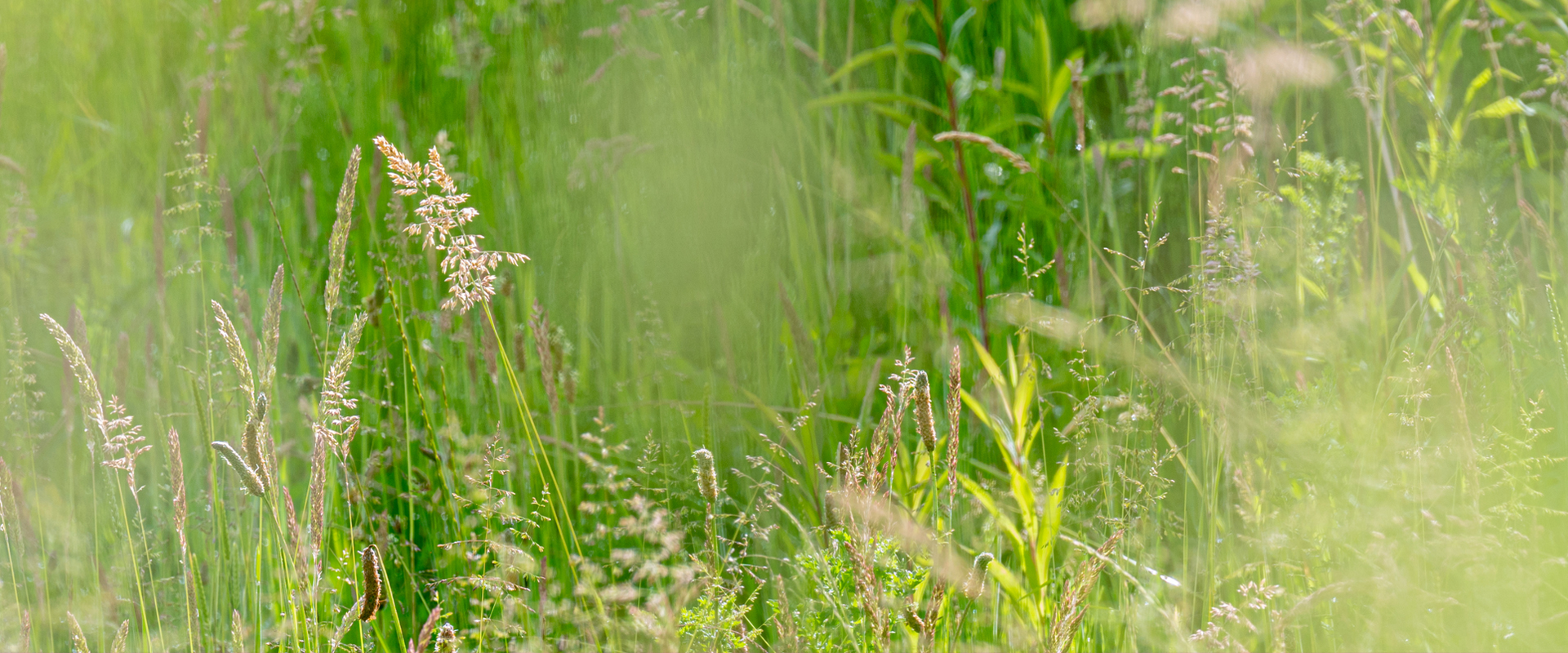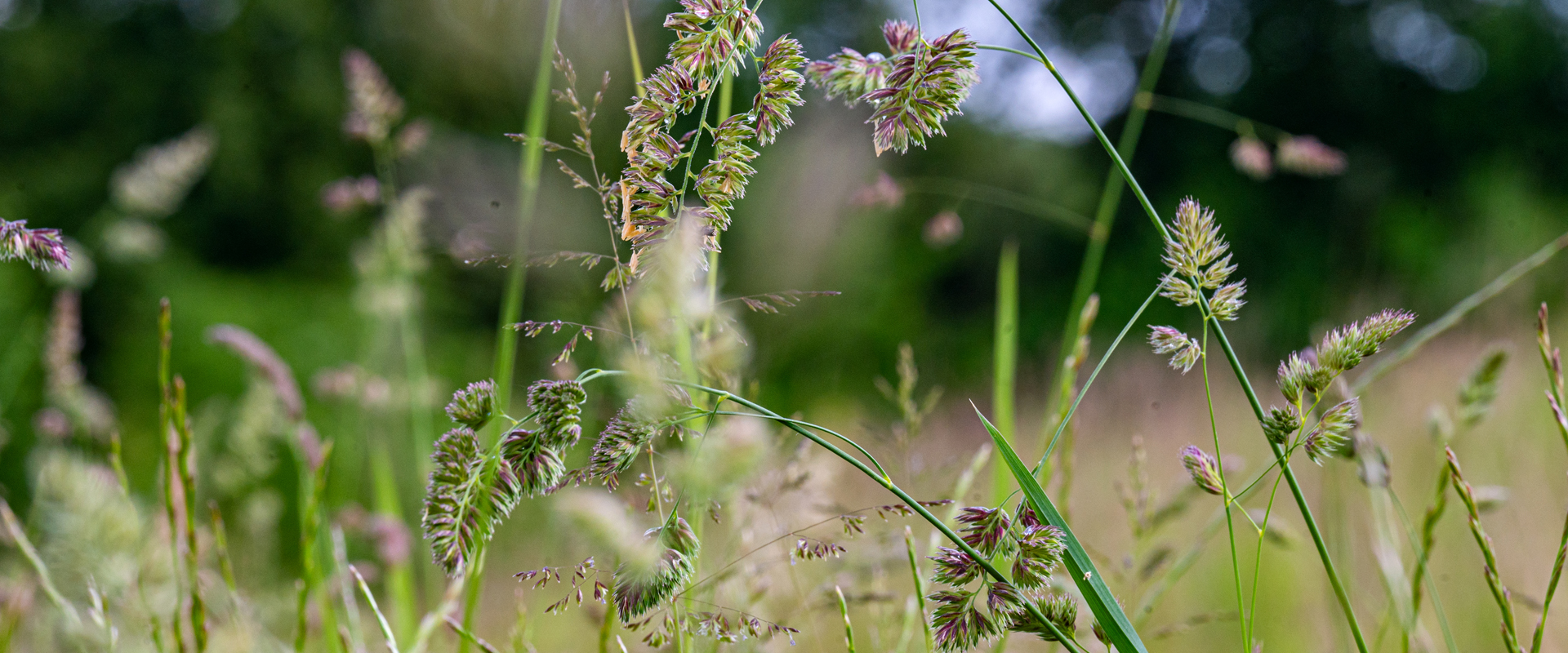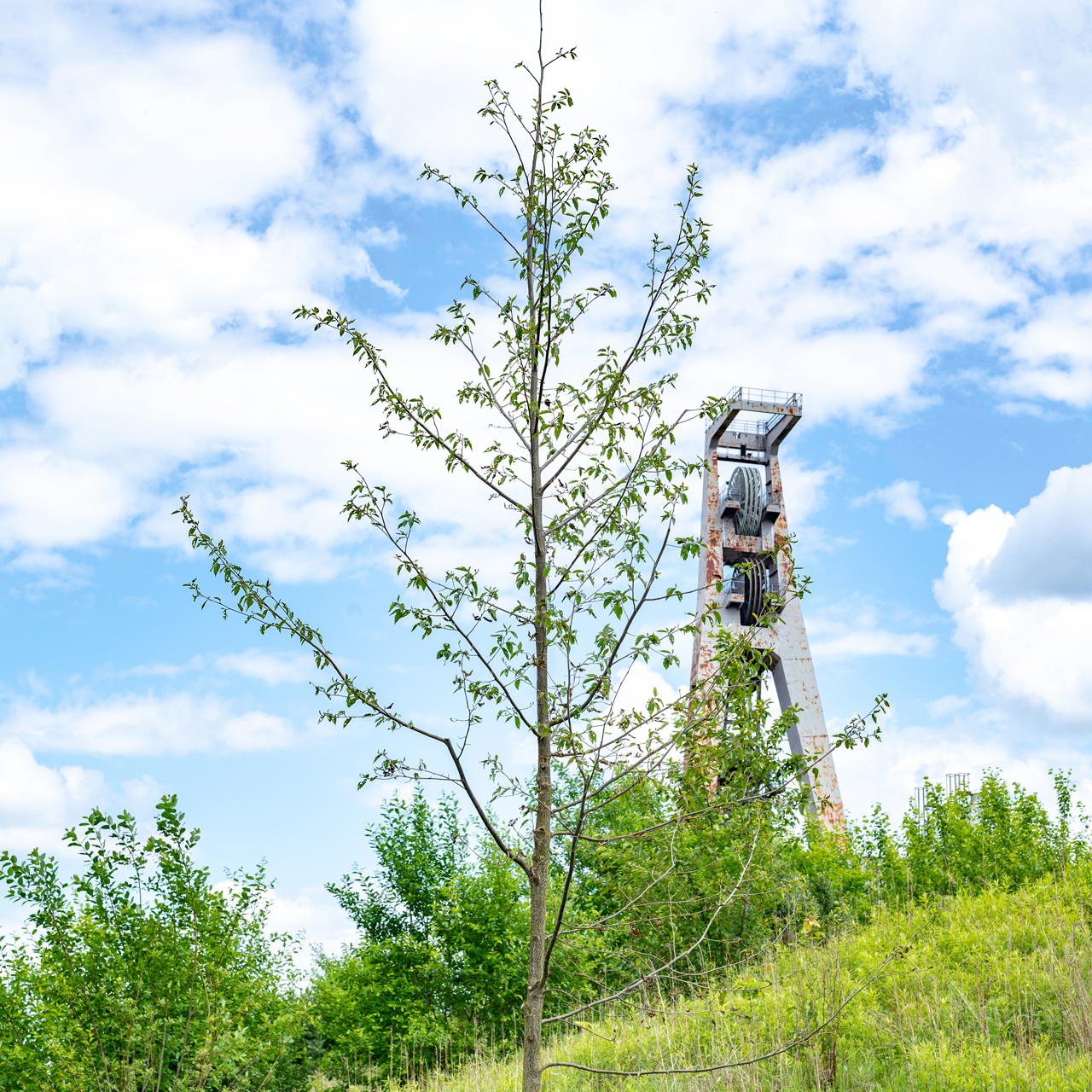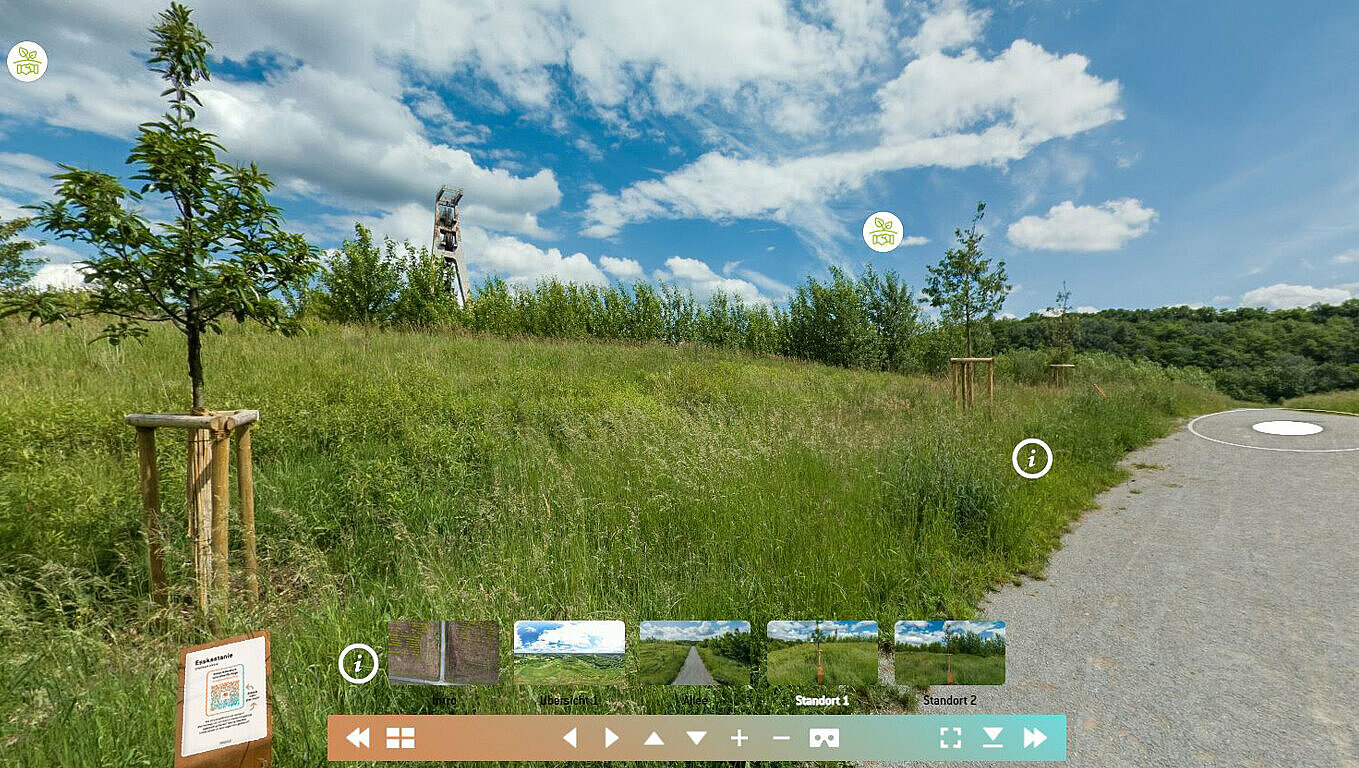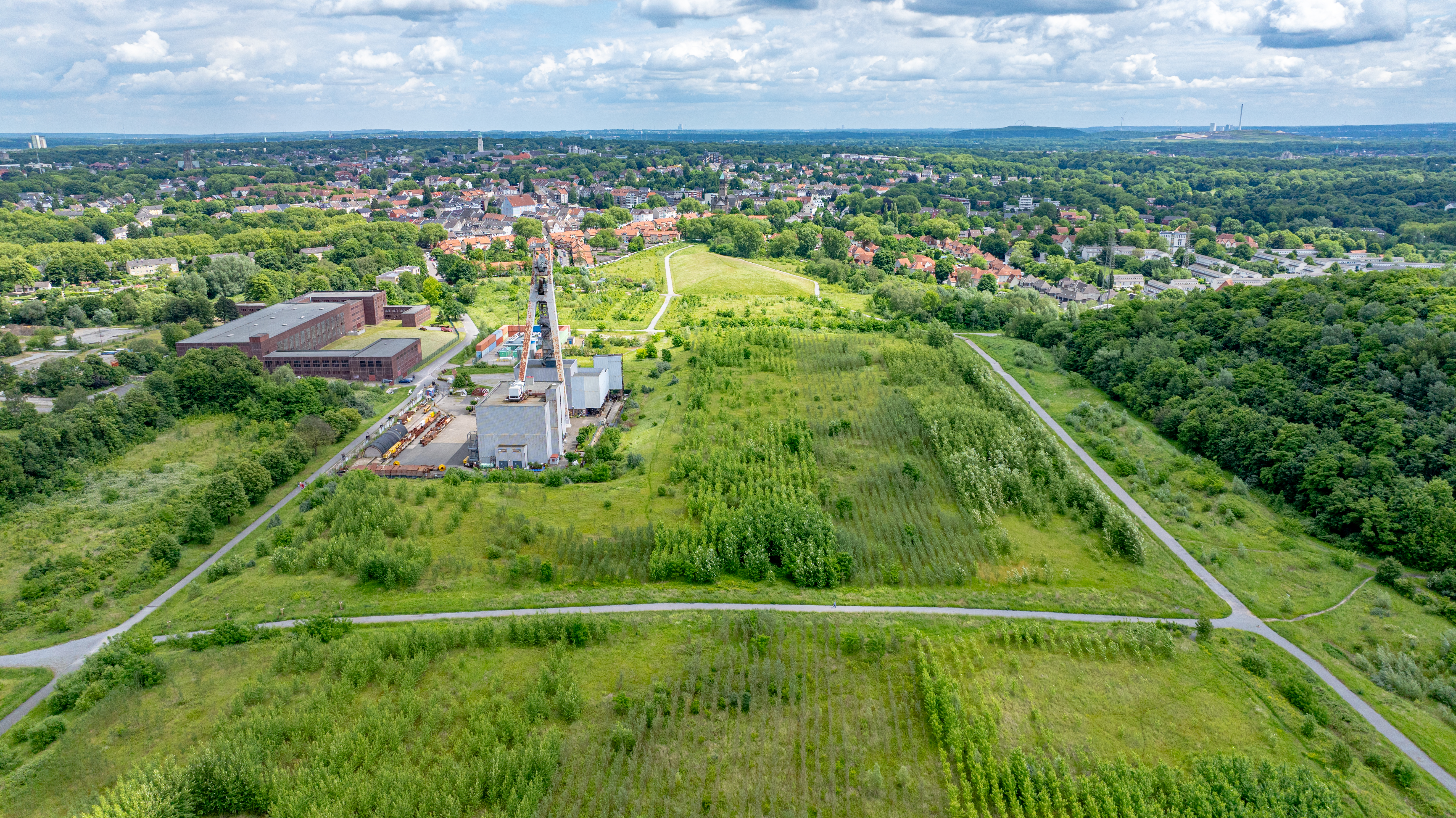
Climate arboretum – an avenue for Hugo
At the heart of the Ruhr region, in Gelsenkirchen – where millions of tonnes of hard coal were once mined – it is greener than many still believe. A quarter of the high-density urban centre there is now a landscape and nature reserve. Parks and green spaces adorn the view around the former coal mining sites. And the transformation continues: At the initiative of the RAG-Stiftung, an avenue lined with a variety of climate-adaptive tree species is being created on the grounds of the former Hugo colliery, which is now a publicly accessible landscape park – a climate arboretum offering ecological benefits and educational and recreational quality.
Long-term investment in a sustainable landscape
For around 120 years, the Hugo mine – and later its associated mines – helped boost the economic strength of Gelsenkirchen. Domestic hard coal supplied households and industry with the energy needed for a modern infrastructure. Utilising the former colliery grounds sustainably now means shaping its responsible use for future generations.
Climate-resilient trees as a contribution to experience, knowledge and sustainability
Climate-stable trees in cities can play a decisive role when it comes to preserving green structures in the urban environment and reducing air pollution and heat islands. However, they also help promote biodiversity in urban areas. At the initiative of the RAG-Stiftung, an avenue with around 40 trees will be created in the coming years in the middle of the Hugo Landscape Park, along the highly frequented footpath linking Brößweg with the Rungenberghalde slag heap. The first four of them were planted in the spring of 2024. With this voluntary measure, the RAG-Stiftung is making a contribution to regional climate adaptation and thus laying another important building block in transformation of the former hard coal mining regions.
The climate arboretum serves as an educational trail. All the trees will be provided with information pillars and boards with a QR code that can be used to call up details about the tree species and its growth in the context of climate change. In addition, visitors can also find out the focal issue and occasion that led to the RAG-Stiftung planting the tree in question. The entire avenue thus delivers ecological, regional value that simultaneously makes the RAG-Stiftung’s mission, and the associated responsibility in the post-mining era over many generations, come alive in a way that is easy to understand.
Leading by example on a large and small scale
The information on the pillars has been printed on high-pressure laminates (HPL), which are largely made from renewable raw materials and finished in environmentally friendly production processes. The core paper is certified by the PEFC and FSC. The environmental footprint of the HPL is evaluated in an environmental product declaration in accordance with DIN EN 15804+A2 and DIN EN ISO 14025. The declaration describes the environmental impacts associated with the product on the basis of predefined parameters (such as energy consumption, greenhouse effect and waste).
The RAG-Stiftung is drawing on the extensive expertise of the Foundation Group for the project: Landschaftsagentur Plus, a wholly-owned subsidiary of RAG Montan Immobilien GmbH, designed the measures and is implementing them on behalf of the foundation.
Among other things, it selects suitable tree species for the climate arboretum. A special feature is that they cope well with heat, drought, poor soils, environmental pollution, but also with heavy rainfall and flooding or nutrient deficiency. Many of these characteristics make such tree species interesting for climate adaptation strategies in an urban environment.
Former Hugo colliery
Production p.a.: Approx. 3.2 million tonnes
Employees: Around 5,000 at its peak
Start of operation: 31 May 1881, foundation of Bergwerks AG Hugo
Start of production: 1885
Colliery amalgamation: 1993 Amalgamation into Bergwerk Hugo/Consolidation, 1997 Amalgamation into Bergwerk Ewald/Hugo
End of operation: 28 April 2000 discontinuation of production, 30 April 2000 closure
Trees are planted that have been transplanted several times and meet the quality standards of the Bund deutscher Baumschulen (BdB – Association of German Tree Nurseries). They are already around 2.50 to 3.50 metres tall when planted. The planned species reflect the extensive range and adaptability of European tree species to climatic conditions. Around 30 native and European tree species are to be planted in the future. The Hugo Landscape Park, which is already very popular with the public, clearly demonstrates the potential of tree populations that are healthy for the climate in terms of their contribution to the ecosystem.
What is a climate arboretum?
The term arboretum is derived from the Latin word “arbor” (meaning tree) and “arbustum” (meaning a plantation of shrubs or small trees). An arboretum is therefore an area planted with various (also exotic) trees and shrubs that have already proved their value in other regions. The climate-resilient trees are planted in a demarcated natural environment for the purpose of species conservation or for educational and research purposes, as they illustrate how trees function, climate change and suitable adaptation measures. The Hugo climate arboretum is specifically dedicated to climate change adaptation in an urban environment.
Which tree species fulfil the requirements for inclusion in a climate arboretum?
Native tree species, but also tree species from Central and South-East Europe that have proven to be climate-stable. All species that cope well with heat and intense sunlight, drought, poor soils, environmental pollution, but also with heavy rainfall and flooding. These tree species are generally also more resistant to pests.
What functions do climate-resilient trees fulfil in the urban environment?
Each tree species can assume special functions in the ecosystem. The Spaeth alder, hornbeam and Hungarian oak, for example, help improve the soil. The wild service tree boasts a high degree of climate adaptivity. All trees usually have characteristics that are particularly important for biodiversity.
